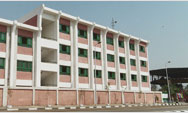 |
|
 |
 |
 |
 Introduction Introduction
Home
- List of Acronyms
- List of Cooperating Sponsors
- Conversion Tables
Part One
Section I:
Commodities
- Commodity Availability
- Commodity Characteristics
- References
Section II:
Food Commodity
Fact Sheets
- Beans, Black
- Beans, Great Northern
- Beans, Kidney (Light Red, Dark Red, All types)
- Beans, Navy (Pea Beans)
- Beans, Pink
- Beans, Pinto
- Beans, Small Red
- Bulgur (BW)
- Bulgur, Soy Fortified (SFBW)
- Corn (bagged, bulk)
- Cornmeal
- Cornmeal, Soy-Fortified (CMSF)
- Corn Soy Blend (CSB)
- Corn Soy Milk (CSM)
- Corn Soy Milk, Instant (ICSM)
- Lentils
- Non Fat Dry Milk (NFDM)
- Peas
- Rice
- Rice (Parboiled)
- Sorghum
- Sorghum Grits, Soy-Fortified (SFSG)
- Fortified Refined Vegetable Oil
- Wheat
- Wheat Flour
- Wheat Soy Blend (WSB)
- Wheat Soy Milk (WSM)
Section III:
Storage/Shelflife
Specifications
- Storage Specifications
- Storage Inspection Checklist
- Shelf Life of Agricultural Commodities
- References
Section IV:
Controlling
Damage to Food
Commodities
- Cleaning and Inspecting
- Insect Control
- Rodent Control
- Reference Chart for Controlling Damage to Food Commodities
- References
 Part Two Part Two
 An Overview An Overview
 Part Three Part Three
|
|
 |
 |
|
Section II: Food Commodity Fact Sheets |
 |
Updated January 2006
Beans, Navy (Pea
Beans)
This
unprocessed commodity is
used as a protein source in all categories of programs. Local tastes
and preferences differ. U.S. dry beans come in many varieties with
different size, color and taste characteristics. When ordering, please
specify Navy Bean variety and any alternates that are culturally
acceptable.
1.
Nutritional Values (per 100 g)
These are average values, taken from the U.S. Department of
Agriculture, Agricultural Research Service (USDA:ARS) 1998 USDA
Nutrient Database, Release 12, Laboratory Home Page, (http://www.nal.usda.gov/fnic/foodcomp).
They are provided as a guideline and are appropriate for use in the
calculation of food aid rations. Please note: these values may or may
not meet the exact specifications of the USDA Export Purchase
Announcements for the P.L. 480 Program, which change periodically.
| Nutrient |
Amount |
Unit |
| Water |
12.36 |
g |
| Energy |
335.0 |
Kcal |
| Protein |
22.3 |
g |
| Total Lipid |
1.28 |
g |
| Carbohydrate |
60.65 |
g |
| Fiber, total dietary |
24.4 |
g |
| Ash |
3.37 |
g |
| Calcium |
155.0 |
mg |
| Iron |
6.44 |
mg |
| Magnesium |
173.0 |
mg |
| Phosphorus |
443.0 |
mg |
| Potassium |
1140.0 |
mg |
| Sodium |
14.0 |
mg |
| Zinc |
2.54 |
mg |
| Copper |
0.879 |
mg |
| Manganese |
1.309 |
mg |
| Selenium |
11 |
mcg |
| Vitamin C |
3.0 |
mg |
| Thiamin |
0.645 |
mg |
| Riboflavin |
0.232 |
mg |
| Niacin |
2.063 |
mg |
| Pantothenic acid |
0.68 |
mg |
| Vitamin B-6 |
0.437 |
mg |
| Folate |
369.7 |
mcg |
| Vitamin B-12 |
>0.0 |
mcg |
| Vitamin A |
4.0 |
IU |
| Vitamin E |
n/a |
mg-ATE |
| Vitamin D |
n/a |
IU |
| Iodine |
n/a |
mcg |
2.
Components: (per 100 g)
100% Navy Beans
3.
Specifications:
Navy Beans shall be grade U.S. No. 2 or better. Beans may include up to
5 percent total defects due to surface dirt which is readily removed
during processing, and shall meet the specifications for the class(es)
of beans listed in the "U.S. Standards for Beans."
(Source: USDA:FSA:PDD:EOB December,
1997 (Contact Tel: 202-690-3565) http://www.fas.usda.gov/excredits/foodaid/commodities/peabeans.htm)
4.
Packaging:
50 kg (110.23 lb) woven polypropylene bags. This fabric contains an
inhibitor to resist ultra-violet absorption along with an anti-skid
coating.
5.
Shelf Life:
Minimum
one year. Dry beans will keep indefinitely if stored in a dry place.
Cooking time will increase as beans age beyond one year. See "Section III: Storage/Shelf Life Specifications"
for more information.
Fact Sheet Download:
|


